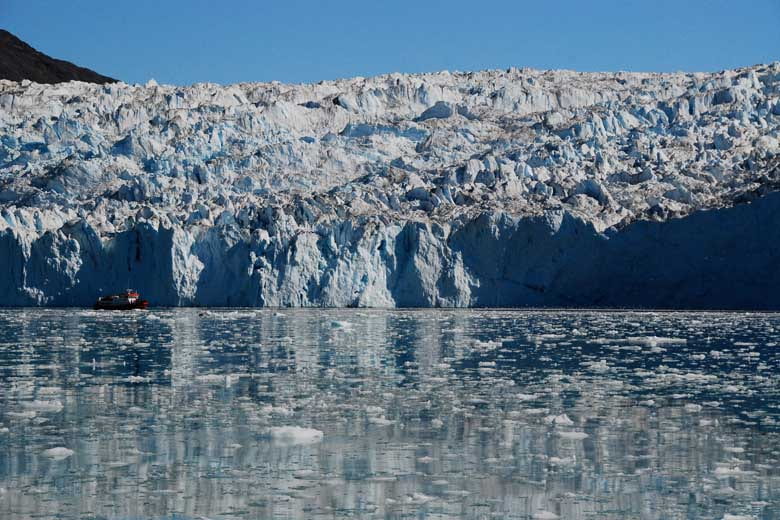Warmer ocean speeding Greenland glacier melt
Glaciers in West Greenland are melting 100 times more rapidly at their end points beneath the ocean than they are at their surfaces, according to a UC Irvine/NASA study.

Glaciers in West Greenland are melting 100 times more rapidly at their end points beneath the ocean than they are at their surfaces, according to a UC Irvine/NASA study published online this week in Nature Geoscience.
The study results suggest this undersea melting caused by warmer water is playing an important, if not dominant, role in the evolution of Greenland’s glaciers – a factor that had previously been overlooked.
Researchers Eric Rignot and Isabella Velicogna of UCI and NASA’s Jet Propulsion Laboratory, along with Michele Koppes of the University of British Columbia, measured the undersea melting rates of four glaciers in central West Greenland in the summer of 2008. They deployed oceanographic equipment in glacial fjords, sampling the water at various depths to measure ocean currents, temperature and salinity, as well as the depth of fjords.
Rignot, Earth system science professor, says the study complements other research on the effects of ocean conditions in Greenland fjords. In the same online issue of Nature Geoscience, Fiammetta Straneo of the Woods Hole Oceanographic Institution and colleagues report ocean condition changes in fjords that may be conducive to changes in undersea melting. A 2008 Nature Geoscience study by David Holland of New York University found that Greenland glacial flow sped up as warm water intruded into fjords.
“Our research fills the gap by actually looking at these submarine melt rates, something that had never been done before in Greenland,” Rignot says. “The results indicate rather large values that have vast implications for the evolution of the glaciers if ocean water within these fjords continues to warm.”
In recent years, scientists have observed widespread acceleration of Greenland’s glaciers, associated with thinning of their lower portions as they reach the sea. Over the past decade, surface melting of glaciers around Greenland because of warm air temperatures has grown in both magnitude and area, while snowfall has increased just slightly. The consequence is a tripling in the amount of ice mass lost in Greenland between 1996 and 2007.
Glaciers melt in a variety of ways, including along their submerged faces, where they come into contact with warm ocean water. Little is known about this rate of melting and its influence. The only previous measurements of submarine glacial melting were in Alaska.
The process causes deep, warm, salty water to be drawn up toward the glacier’s face, where it mixes turbulently with the glacier’s cold, fresh water. It rises along the face, melting ice along the way, then reaches the ocean surface and flows away from the glacier in a plume. An ocean temperature of 3 degrees Celsius (37.4 degrees Fahrenheit) can melt several meters of glacial ice per day, or hundreds of meters over the course of a summer.
Rignot says it’s necessary to account for this undersea melting in models used to predict how climate change will affect Greenland: “If we are to determine the future of the Greenland ice sheet more reliably in a changing climate, more complete and detailed studies of the interactions between ice and ocean at the sheet’s margins are essential.”


